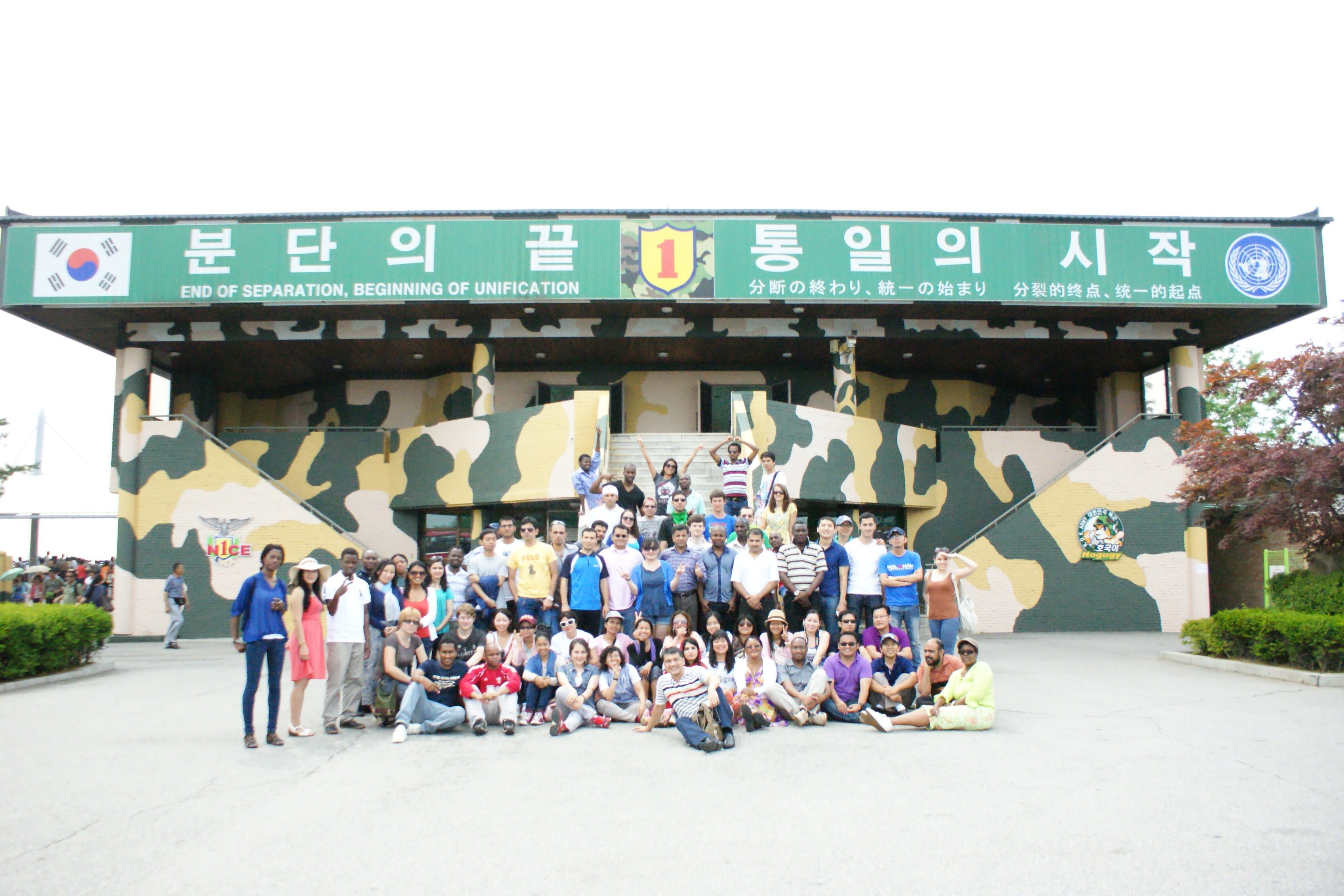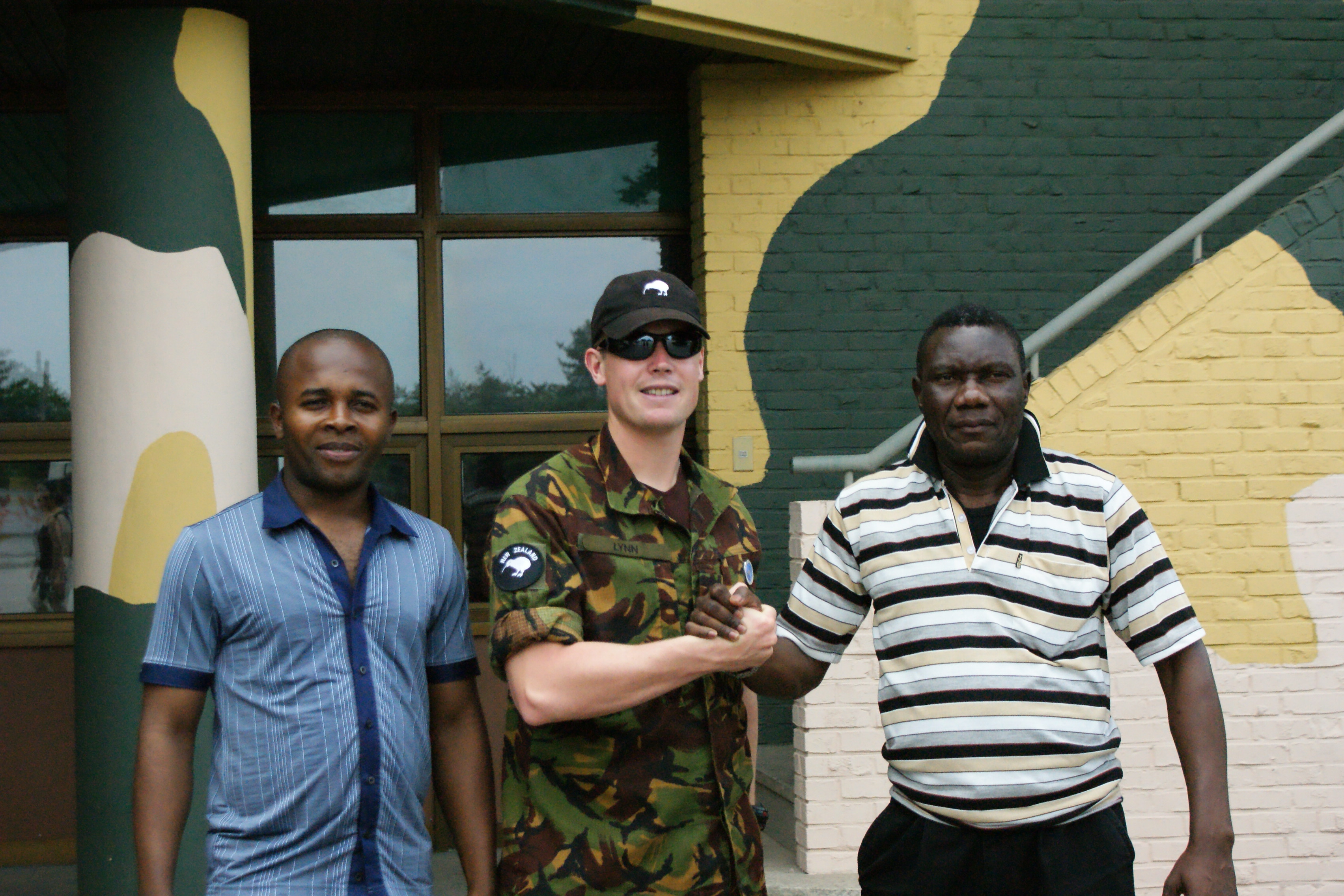
Korea’s Past, Present and Future
- Date 2012-08-01 02:13
- CategoryNews
- Hit1681
By Maria Charmaine D. GUEVARA (2012 MDP, Philippines)


A day’s journey to the DMZ area in the city of Paju in Gyeonggi Province is an annual pilgrimage for KDI School students. It is one unforgettable experience for the international students to visit the various markers and memorials that represent Korea’s past—the pain and tribulations of the Korean War, its present—the current tension and antipathy between the nations, and its future—the continuing struggle to achieve the utopian scenario of cessation of hostilities and possible reunification.
Located along the banks of the Imjin River in Paju, various monuments and statues commemorating the Korean War could be found at the Imjingak Park. The “Bridge of Freedom” was one of them, a railroad bridge used to repatriate prisoners-of-war from the North. Imjingak Park also serves as a place of sorrows for Koreans who got separated from their families during the war. Annually, almost four million visitors spend time at Imjingak’s peace monument to remember those who died in the war and pray for eventual reunification.
A visit to the DMZ Third Infiltration Tunnel was our next stop. On a tip from a defector, the Third Tunnel was discovered more than thirty years ago, measuring 1.7 kilometers long with a depth of 73 meters below the surface ground. Only 44 kilometers from Seoul, the tunnel was designed for a surprise attack on the capital, with an estimate of 30,000 soldiers per hour that can go through the underground passage. It is believed that there are more than ten tunnels in existence; the joint Korean-US military group in the DMZ regularly conducts drilling in hopes of finding more.
The Tunnel visit was followed by quick tours at the Dora Observatory and Dorasan Station. The Dora Observatory is an area of South Korea closest to the North. The North Korean propaganda village called Kijong-dong or Peace Village can be seen through binoculars, as well as the city of Kaesong. The Dorasan station, a few minutes away from the Dora Observatory, serves as a symbol of the division between the two Koreas and a future gateway of the south-north exchange. Currently the station is not operational, and is only open to tourists.
What did the students have to say of this field trip?
 Eli Cardona Orantes (2012 MDP, Guatemala)
Eli Cardona Orantes (2012 MDP, Guatemala)
Getting into the 3rd tunnel made me more aware of the existing friction between the two Koreas. In Dorasan station, I could feel that Pyongyang is closer than I thought.
 Simson Leider Nadeak (2012 MPP, Indonesia)
Simson Leider Nadeak (2012 MPP, Indonesia)
A valuable experience. I could not forget the reactions of my fellow students, how they paid respects to the memories of the Korean War.
 Sovatha Sok (2012 MPP, Cambodia)
Sovatha Sok (2012 MPP, Cambodia)
Witnessing with my own eyes the long infiltration tunnel, symbolizing the North’s aggression towards the South, was such an extraordinary experience. I also feel sad for those who perished in the war, and the tragedy of separation amongst Korean families.
 Messaoudi Mohammed (2012 MDP, Algeria)
Messaoudi Mohammed (2012 MDP, Algeria)
I felt how this country had suffered in the past and how the people’s pursuit of peace helped build this nation. Thanks Korea, we have learned a lot from your experience, and will continue to learn from you.
Related News
-
News743 days ago
Celebrating International Women's Day 2022 with Prof. Joeun Kim#KDISCHOOL #KDIS #Internationalwomensday #professor #Interview #JoeunKim
-
Story836 days ago
Small Acts of Kindness with Big Impacts - Stories from KDIS Students#Interview #kdi #KDIS #KDI school #Student #kdischool #kindness
-
Story839 days ago
Letters from the New Alumni Association Representatives#Interview #Alumni #kdi #KDIS #Kazakhstan #KDI school #kdischool #Alumni Association #Cameroon #message #australia #madagascar #russia #sierra leone #zimbabwe
